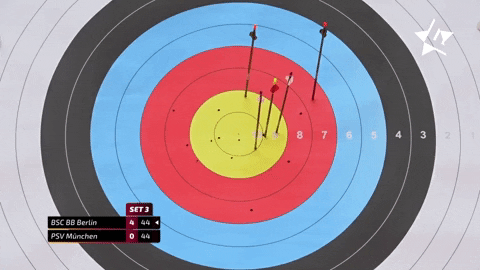With all that’s going on in the world and in the market of late, I gotta tell ya it was amazing to get away for a few days.
Here I am having lunch with the founder of the Bahamas stock exchange at a conference I attended recently.
And here I am enjoying the beautiful surroundings the conference venue had to offer.
We made some great contacts down there and I am excited to see where things lead.
But it also feels great to get back into the game and scan charts to find trades again.
Look, there’s no question that there’s carnage throughout the market.
But carnage doesn’t mean you need to run for cover.
As I have written a lot about recently, this is part of a seasonal pattern that tends to weigh on markets through the second half of January.
But with volatility comes opportunity, and with the right timing, I can capture larger swings in the markets that may not normally be available, and collect premium while doing it.
I am preparing for a bounce in shares of Upstart Holdings, Inc. (UPST) by using a “bull put spread”
Upstart Holdings, Inc. operates a cloud-based artificial intelligence (AI) lending platform. The company’s platform aggregates consumer demand for loans and connects it to its network of the company’s AI-enabled bank partners. Its platform connects consumers, banks, and institutional investors through a shared AI lending platform. Upstart Holdings, Inc. was incorporated in 2012 and is headquartered in San Mateo, California.
As the first chart below shows, we are entering the buy zone in UPST after sellers have pushed the stock lower from $400/share down to the psychologically important $100 area.
Figure 1
Why is the $100 level important?
Because humans have a round number bias.
Think about it. Ever see a trader on the floor of the New York Stock Exchange wearing a hat that reads “Dow 30,001,” or participate in a salary negotiation that ends in anything other than zero?
As in other areas of your life, our round number bias also shows up in the stock market.
Whether that means we’re waiting for a stock to get back to $100, or celebrating our portfolio crossing the $50,000 mark, this bias is constantly present in our trading.
Certain algorithms are programmed to take advantage of our round number bias
We talk a lot about how computers have become incredibly influential in driving price action in recent years.
When we’re talking about big, round numbers in trading, the majority of computer algorithms don’t care.
But there are still some “predatory algorithms” that are designed to exploit human emotion.
These specialized algorithms often take into account the increased liquidity that occurs around big levels like $50 and $100, and it’s these big psychological levels that are the focus of today’s discussion.
As traders, we often look for prior areas of support and resistance to use as points of leverage to buy and sell stocks.
UPST is actually a good example of this, as Figure 2 shows the stock spent a lot of time transitioning into an uptrend, first by using the $100 as resistance, then support, back in the first half of 2021.
Figure 2
With all this in mind, after such a massive cut in stock valuation since mid-October, $100 is a logical area to expect that selling should start to subside as bulls might feel they are getting the right value for the stock in that area.
Therefore, as Figure 3 shows, I am straddling the area just below $100 by selling a “bull put spread” to collect on the increased options premiums that have resulted from the sharp jump in volatility shown in the bottom panel of Figure 1 above.
Figure 3
When would a trader use a bull put spread?
This strategy is best utilized when a trader has a neutral to bullish opinion of a stock or ETF.
Since the trader is a net seller and collecting a premium, the trade benefits from both time decay and rising stock prices.
The trade is also statistically proven to provide better odds of success than many other trading strategies.
What are the basic mechanics of a bull put spread?
A bull put spread is the easiest multi-leg options strategy to learn because it consists of one long put with a lower strike price and one short put with a higher strike price, both of which have the same expiration date.
Since the trader is selling the put with the higher premium, a bull put spread is established for a net credit (or net amount received).
The trade profits when the value of the spread declines over time.
What’s the maximum profit potential?
The maximum a trader can make on this trade is limited to the net premium received (minus commissions).
The maximum profit is realized if the stock price is at or above the strike price of the short put (higher strike) at expiration and both puts expire worthless.
What’s the maximum loss potential?
To find the maximum that can be lost on the trade, find the difference between the strike prices minus the net credit received (plus commissions).
The maximum loss risk is realized if the stock price is at or below the strike price of the long put at expiration.
What’s the breakeven point of the trade?
To find the breakeven point, take the strike price of the short put (higher strike) and subtract the net premium (credit) received.
Conclusion
Make no mistake; one should never expect that a big round number level like $100 on a stock’s price chart is going to cause the stock to stop at that exact level during a downtrend.
There’s usually going to be a bit of a cushion of something like +/- 1% to 3% on either side of that level where the price will ultimately stop.
When it comes to my 4 Feb 22 100 / 4 Feb 22 95 bull put spread, I have a window down to the $95 as my cushion.
If shares of UPST should fail to bounce from current levels and ultimately roll over below $95, I will use that as my signal to stop out of the trade.
To YOUR Success!
Comments are closed.





5 Comments
Dude. People rarely say they’re going to share something like this & actually do it. Here’s to more people like you. Thank you.
Hi Jeff, maybe we get a bounce on Monday and UPST gets back above your $95 stop if you haven’t already been stopped out. I agree often numbers like $100 can be looked on as potential support but in the current bearish market, Nothings certain. I have a Feb 18 VPS on MSFT 260/265 and with earnings due next Tuesday I’m expecting some support or when and if MSFT touches its 200MA @ $292 area. I also have a Feb 18 VPS on MSFT 250/255. I got to believe MSFT will have strong earnings as they usually beat estimates. Also the ATVI acquisition is all cash so no more added debt.
Jeff,
Very good presentation and trade plan.
You seem to have hit all the salient points that I would be interested in.
Maybe someday, I’ll net a profit in trading options, if I keep trying but I have to
think that the market makers who take the other side of the trade and/or the big money
traders are a lot smarter than we are and have material non-public information on their side – otherwise they wouldn’t commit millions of dollars to a trade!
Jeff Zun
I wanna join
Hey Ken,
Thanks for the reply! For this, please give us a call at 410-775-8565. We look forward to speaking with you!
Good Trading,
The RagingBull Team